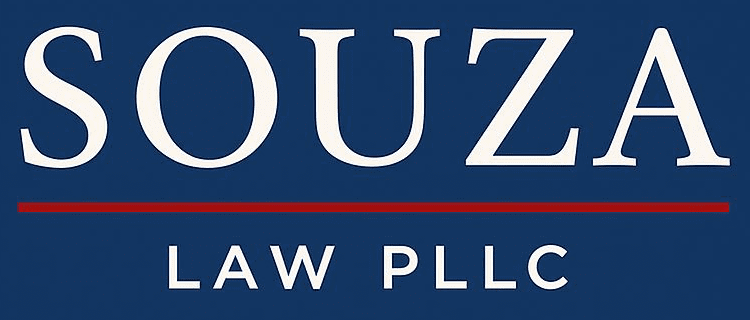Your 2025 Family Visa Blueprint: Sponsorship to Green Card
Souza Law PLLC has helped hundreds of families navigate America’s complex immigration maze. 2025 brings new visa-bulletin movement, pandemic-era backlogs, and subtle policy tweaks that can make or break a petition. This guide covers every critical step—so you can reunite with loved ones sooner and avoid costly delays.
1. Who Can Sponsor Whom in 2025?
U.S. citizens may file Form I-130 for spouses, parents, children (any age), and siblings. Lawful permanent residents (LPRs) can sponsor spouses and unmarried children. Each category falls into a statutory “preference” queue—meaning wait times range from zero months (immediate relatives) to 15+ years (siblings of citizens born abroad).
2. Decoding the Visa Bulletin
The State Department updates its Visa Bulletin every month. Sponsors must compare the beneficiary’s “priority date” to the chart’s cut-off date for their category. When your date is “current,” your next filing window has opened. Pro Tip: Subscribe to the Souza Law PLLC newsletter—our attorneys breakdown each monthly movement and send you an alert when action is needed.
3. Marriage-Based Green Cards: Extra Scrutiny Ahead
Spousal cases remain the fastest route to a green card, but the fraud rate is higher here than any other family category. Expect a thorough interview and prepare joint evidence such as:
- Lease or mortgage showing both names
- Joint tax returns and bank statements
- Photos from multiple life events
- Shared insurance policies
Failure to bring robust documentation can trigger a dreaded Notice of Intent to Deny (NOID). Our attorneys rehearse “mock interviews” to help couples communicate a genuine, consistent story.
4. Adjustment of Status vs. Consular Processing
If the beneficiary is already in the United States on a valid visa, filing Form I-485 (Adjustment of Status) often saves time. If they are abroad—or entered without inspection—consular processing via the National Visa Center (NVC) is required. Each path has unique document checklists; choosing incorrectly can set a case back by 12 months or more.
5. 2025 Fee Increases and Processing Times
On April 1, 2025, USCIS raised the I-130 filing fee from $535 to $710 and introduced a separate biometrics surcharge. Meanwhile, the California Service Center averages 12.1 months for stand-alone I-130s, whereas the Texas Service Center hovers near 17 months. Check the USCIS processing-time tool weekly and consider premium-processing upgrades when available.
6. Common Pitfalls to Avoid
- Missing translations or uncertified documents
- Inconsistent addresses across forms
- Failure to update USCIS within 10 days of an address change
- Misunderstanding the 90-day rule for recent arrivals
Each mistake can trigger a Request for Evidence (RFE) that adds 3–9 months to your timeline.
7. How Souza Law PLLC Can Help
Our family-immigration team offers flat-fee packages that include:
- Priority-date monitoring and proactive reminders
- Comprehensive document review & USCIS filing prep
- Interview coaching and attendance (virtual or in-person)
Ready to start your family’s journey? Book a strategy call with Souza Law PLLC or call (954) 372-7789 today.
